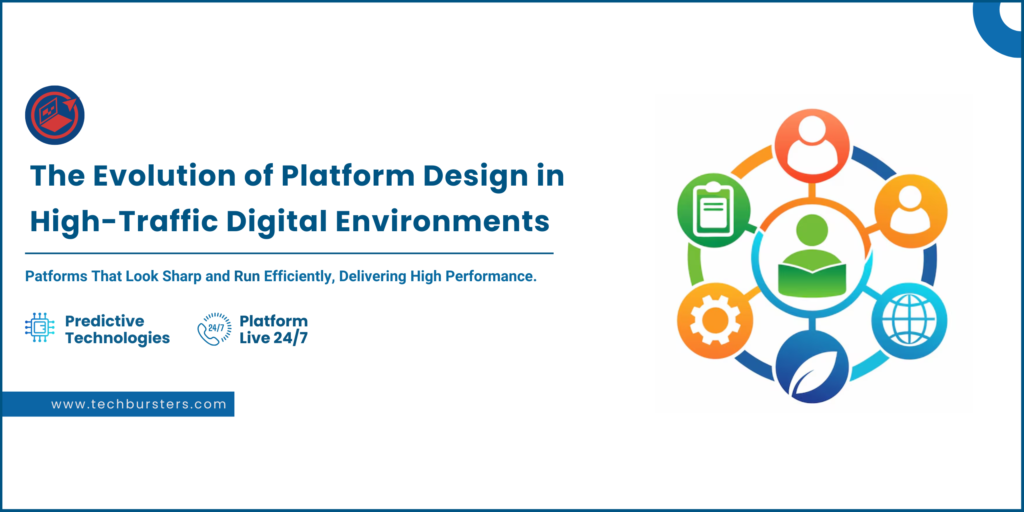
We’ve all felt the pull of an app or site that keeps us scrolling, clicking, or watching just one more thing. That’s no accident. Behind every high-traffic digital space is a carefully crafted platform to hold your attention.
But how did we get here? Design has rapidly evolved from basic websites to today’s ultra-personalised, algorithm-driven platforms. And with more users comes more responsibility.
Below, we’ll look at how platform design has changed, what drives those changes, and why understanding these shifts matters for creators, consumers, and anyone who wants more mindful online experiences.
High Stakes and High Traffic: The Demands of Real-Time Digital Platforms
Speed and reliability are crucial in real-time digital spaces, such as streaming services, gaming hubs, and online casinos. Users expect instant access, seamless functionality, and no downtime—especially when money is at stake.
Take online casinos, for example. A Canadian online casino must handle thousands of players logging in simultaneously, especially during peak hours or big promotions. It needs fast load speeds, secure payment systems, and rock-solid uptime to keep players engaged and safe.
Whether it’s a Canadian online casino or a mobile-first provider in New Zealand, these operators must ensure fast, secure, and uninterrupted gameplay.
Handling traffic surges requires scalable, robust infrastructure. These platforms rely on scalable cloud servers, load balancers, and data centres that flexibly meet demand. Any slowdown or crash could result in lost consumers and income, whether during a Saturday night rush or the launch of a new game.
That’s why performance matters. In these high-traffic digital environments, every millisecond counts. It’s not just about flashy games or sleek design. It’s about delivering a smooth, responsive experience every time users log in.
From Static Pages to Dynamic Systems: How Web Architecture has Evolved
Web platforms have come a long way, from simple, all-in-one sites to robust, modular systems. Back then, everything lived in a single “monolithic” codebase, easy to build but tough to scale. As systems grew, that approach hit its limits.
Enter microservices: small, independent services that talk to each other via APIs. This lets platforms grow piece by piece, updating one component without taking down the whole system. Need a new feature? Just plug in a new service.
Behind the scenes, load balancers distribute traffic across servers so no one box gets overwhelmed. API gateways direct requests securely and handle things like authentication and routing. Platforms also rely on distributed systems, like CDNs, to deliver content fast and reliably globally.
When you load a streaming site or jump into a game, you’re tapping into a flexible, responsive engine behind the scenes built to handle millions of users without breaking a sweat.
User Experience at Scale: Designing for Performance Without Sacrificing Aesthetics
Designing for large audiences means balancing beauty with speed. You want a sleek look, but performance issues quickly drive users away. Studies show that fast load times and smooth visuals matter. Due to the ‘aesthetic–usability effect,’ we often judge a site’s ease of use by its appearance.
Enter adaptive UI: platforms detect a device’s screen, speed, and capacity and serve only what’s needed, such as lightweight phone images and high-resolution photos for desktops. Teams use responsive grids, flexible units, and media queries so layouts flow regardless of screen size.
On the backend, efficient assets, like compressed images and lazy-loading scripts, keep things quick. Meanwhile, CDNs and smart caching ensure that content reaches users quickly, locally or halfway around the world.
The result? Platforms that look sharp and run efficiently, delivering high performance without compromise.
Data-Driven Design: Personalisation and Predictive Technologies
Why does Netflix seem to know exactly what you want to watch? It’s not magic. It’s data doing the heavy lifting.
Each swipe, click, or rating feeds into algorithms that update recommendations in real-time. Netflix tracks what you start, finish, and rate, then uses collaborative filtering and machine learning to keep suggestions fresh and relevant.
The secret? Platforms need fast, reliable pipelines. They use streaming tools like Apache Kafka or AWS Kinesis to collect events instantly. Then, frameworks like Apache Flink or Spark Streaming process data on the fly, filtering, aggregating, and transforming it before delivering personalised content via low‑latency APIs.
With this configuration, suggestions emerge instantaneously, whether for music on Spotify or shows on Netflix. It’s comparable to having a personal curator—effortless and efficient. The result? A more engaging, intuitive experience, built around real-time data and smart backend tools.
Resilience and Redundancy: Keeping the Platform Live 24/7
When a platform has thousands or millions of users at once, staying online isn’t optional. That’s where cloud infrastructure and auto-scaling come in. These systems automatically spin up more servers when traffic spikes and scale back when things quiet down.
Next, global CDNs (Content Delivery Networks) distribute content across servers worldwide. If one server goes down or slows, another nearby takes over instantly. It functions much like backup power for your favourite app or website.
But what about disasters? Platforms are prepared with failovers, backup systems that automatically detect issues and switch traffic. Some also maintain standby data centres across regions, so if one region suffers an outage, another picks up the slack.
All this means that when you log in, you’re unlikely to notice any hiccups, even during heavy use or regional failures. That uptime? It’s thanks to resilience and redundancy working behind the scenes.
Smart Design Powers Seamless Experiences
Behind every smooth, responsive digital experience is a platform built with intention. From real-time responsiveness to adaptive UI, personalised content, and always-on reliability, high-traffic platforms work hard to stay sharp. When design meets performance, users stay connected, and that’s the real win in today’s digital world.
